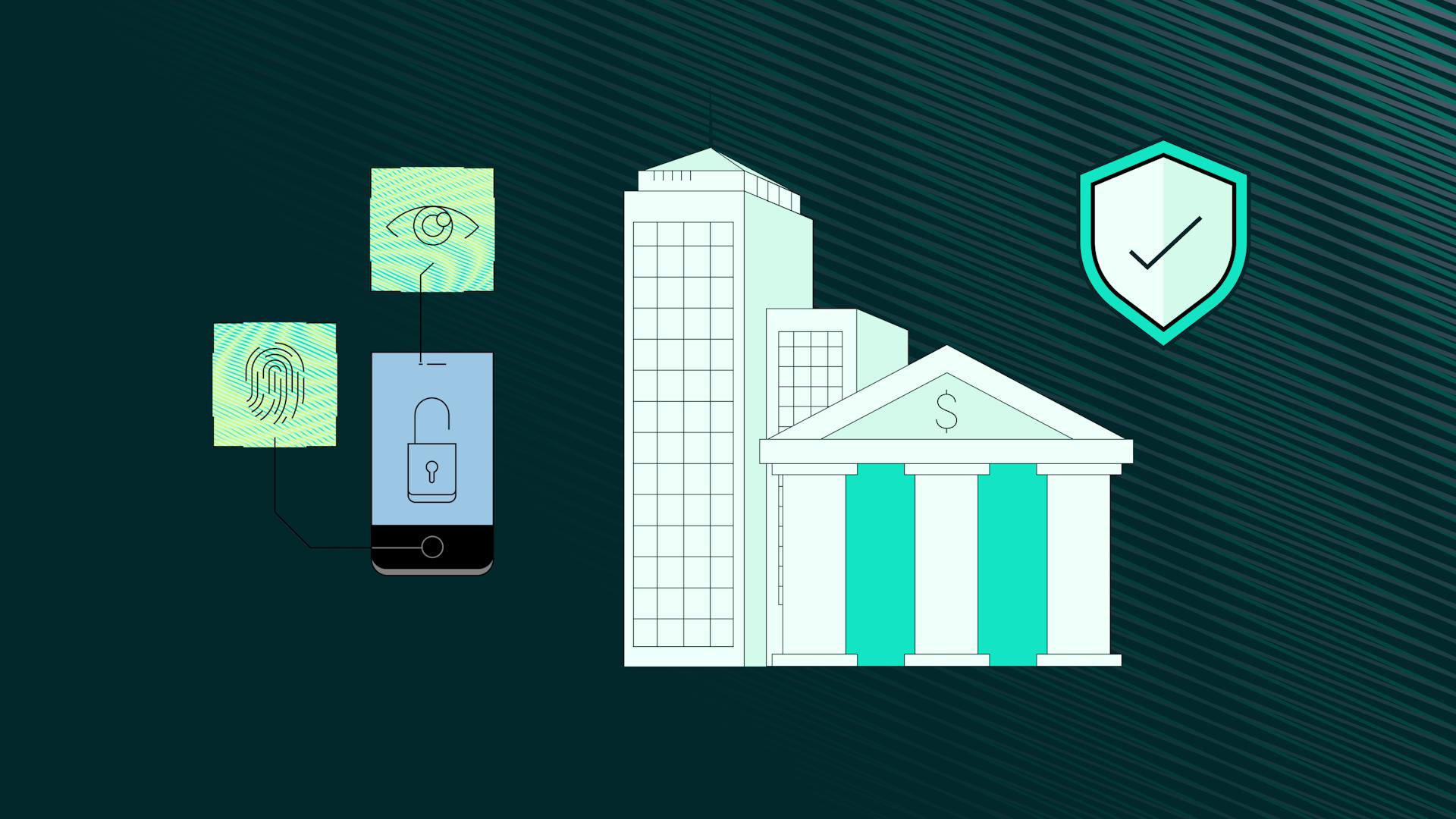US fraud trends 2025: Exploring insights from Veriff’s Industry Pulse Survey
Fraud is evolving fast—are you keeping up? Veriff’s 2025 US Fraud Industry Pulse Survey reveals the latest fraud trends and how businesses are fighting back. Don’t get left behind—learn how to safeguard your business for 2025.


Chris Hooper
Fraud is evolving—so must your strategy
Fraud is escalating rapidly, and fraud teams across industries are under increasing pressure to keep up.
Veriff’s 2025 US Fraud Industry Pulse Survey captures the latest fraud trends, their impact on organizations, and the actions industry leaders are taking to combat them.
We spoke to 200 fraud experts and decision-makers across industries like financial services, technology, and e-commerce to bring you exclusive insights on everything from fraud prevention to seamless customer onboarding.
As part of our global survey, featuring perspectives from countries like the UK and Brazil, this report zooms in on the US while uncovering global trends shaping online businesses everywhere.
Here’s what you’ll discover:
1. Fraud incidents are surging—especially in digital-first industries
Nearly 72% of respondents reported a year-over-year increase in fraud, with fintech and crypto seeing the sharpest rise. Fraudsters are exploiting digital vulnerabilities as more services move online.
This trend is being observed worldwide. Similar findings emerged in other regions covered in this year’s global report, with 72.5% of UK respondents and 70% of those in Brazil also reporting a rise in online fraud. It’s evident that fraud professionals in the US and around the world are dealing with a growing global threat.

Key takeaway:
Fraud prevention isn’t just a compliance requirement—it’s a business-critical function that safeguards revenue and brand trust.
2. AI-driven fraud is the new battleground
AI is being applied in various ways by US. fraud professionals to combat fraud. The most common application is detecting fraud patterns and identifying potential risk factors (51.5%). However, many also rely on AI to streamline customer verification (43%), quickly uncover complex fraud schemes (38%), and monitor customer behavior over time to flag anomalies (32.5%). Notably, US professionals appear to leverage AI more broadly than those in other countries. In fact, 41.5% of US respondents reported using AI across all these areas, compared to just 23.5% in the UK and 26% in Brazil—highlighting the more widespread adoption of AI tools in the US fraud prevention landscape.

Industry response:
Companies are investing in AI-powered identity verification (IDV), biometric authentication, and deepfake detection to combat these advanced fraud tactics.
Artificial intelligence is proving to be a powerful tool in the fight against fraud, supporting organizations in multiple ways. The most common application is identifying fraud patterns and potential risk factors, with over half of respondents highlighting this benefit. AI is also widely used to automate customer verification processes, enabling more thorough and efficient checks. Additionally, organizations use AI to speed up the detection of sophisticated fraud schemes and to analyze customer behavior over time, helping to flag unusual or suspicious activity. Notably, a large portion of respondents—over 40%—reported using AI for all these purposes, underscoring its value as a comprehensive fraud prevention solution.
3. The persistent and adaptive nature of online fraud
Online fraudsters are both resourceful and adaptable, posing a wide variety of threats to businesses. This report highlights the diverse nature of these risks, with similar percentages of respondents identifying authorized fraud (41%), impersonation fraud (44%), document fraud (38%), and malware (46%) as key concerns.
These threats were also the top four in last year’s report, underscoring their persistence. However, the continued prevalence of account takeover (21%), third-party coercion (17%), and multi-accounting (14%)—aligning with the findings of our 2025 Fraud Report—demonstrates that criminals will exploit any opportunity to steal from businesses. To counter these evolving threats, fraud professionals must implement the strongest possible defenses.
Actionable step:
Businesses must enhance Know Your Customer (KYC) and Anti-Money Laundering (AML) protocols with multi-layered verification solutions.
“There could be a range of dangers ahead: it is vital that firms build their security posture on technology that can evolve to meet evolving threats,”
4. Customers expect more from fraud protection
Fraud isn’t just a business issue—it’s a customer trust issue. 71.5% of respondents said their customers now expect robust fraud prevention measures. Businesses that don’t meet these expectations risk losing customers to competitors who do.
This underscores a continuing trend from last year, when 86% of US decision-makers recognized it as a top customer demand. The shift isn’t limited to the US—our most recent global survey shows that 79.5% of fraud professionals in Brazil and 71% in the UK are seeing similar increases in customer expectations. The message is clear: companies that fail to safeguard their customers against online fraud risk losing their trust, while those that prioritize security can turn it into a competitive edge.

5. Investment in fraud prevention is increasing
There’s good news: organizations are taking fraud seriously.
76% of fraud and compliance leaders plan to increase their fraud prevention budgets in the next 12 months.
Top investment areas include:
- AI-powered identity verification
- Device fingerprinting for behavioral tracking
- Ongoing user monitoring to detect anomalies
- Fraud Intelligence solutions leveraging real-time data analytics
Fraud professionals in the US. are increasingly adopting IDV and biometrics, with usage expected to rise even further. According to our survey, 81% of respondents intend to rely more on these technologies in the next year, reflecting both the security benefits they've already observed and their confidence in future advantages.
This trend continues the steady growth seen in previous years and is not limited to the US.—it's a global shift. In the UK, 78.5% of respondents plan to expand their use of IDV and biometrics, while in Brazil, the figure reaches 85%.
6. Why identity verification is a critical fraud-fighting tool
Fraud prevention starts with verifying identities with confidence. Organizations need a seamless, AI-driven identity verification process that ensures:
- Frictionless customer onboarding without compromising security
- Protection against identity theft, account takeovers, and synthetic fraud
- Compliance with evolving regulations like KYC and AML
Veriff’s global-first identity verification solutions integrate biometric authentication, liveness detection, and AI-driven fraud prevention to help businesses detect and prevent fraudulent activities at scale.
Emerging trend:
Insights from Gartner and industry analysts indicate a shift towards fully integrated fraud prevention solutions. By 2029, over 50% of vendors will consolidate fraud detection, ID verification, and AML monitoring into unified platforms (FRAML solutions). This shift aligns with fraud teams’ increasing need for automation and risk intelligence.
Additionally, regulatory pressure is increasing, especially in high-risk industries. The move towards biometric-based identity verification is evident in regions like Brazil and Mexico, where government initiatives are promoting liveness detection and facial biometrics for fraud prevention (Market Insights: LATAM 2025).
7. How Veriff empowers fraud teams
Fraud teams need more than just tools—they need scalable, AI-powered solutions that integrate seamlessly into their workflows.
Veriff’s fraud prevention solutions include:
Veriff’s Fraud Protect solution offers businesses a powerful, AI-driven toolkit to detect and prevent fraud at scale. By combining machine learning checks, fraud network analysis, and in-house counter-fraud expertise, Veriff helps organizations identify suspicious activity and safeguard genuine users. The solution includes tools like DocCheck to flag physical or digital document tampering, DeviceCheck to assess risk based on device signals, and FaceBlock to block known or suspected fraudsters. FaceCheck and FaceCheck Liveness add biometric scrutiny to ensure users are real and present—not manipulated or generated. Meanwhile, CrossLinks and RiskScore provide a broader view of fraud risk, including emerging threats like deepfakes. Together, these features empower fraud teams to act with confidence, reduce false positives, and stop sophisticated fraud before it impacts the business.
8. Driving growth and trust: How Veriff helped Legitify scale securely and seamlessly
By partnering with Veriff, Legitify was able to streamline its notarization process through seamless and secure identity verification. Veriff’s innovative IDV technology not only ensured compliance with regulatory requirements across multiple jurisdictions but also significantly enhanced user trust and platform security. With Veriff’s real-time verification and fraud prevention capabilities, Legitify reduced onboarding friction, improved the overall customer experience, and accelerated its international expansion. This strategic partnership played a crucial role in Legitify’s continued growth and success in the digital notarization space.
Get the latest from Veriff. Subscribe to our newsletter
Veriff will only use the information you provide to share blog updates.
You can unsubscribe at any time. Read our privacy terms.


